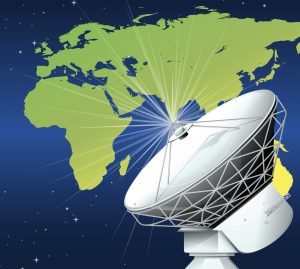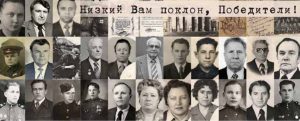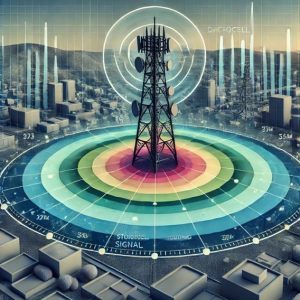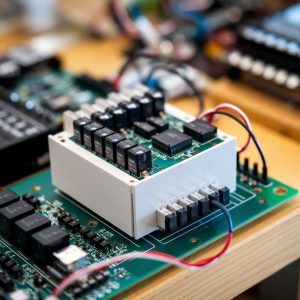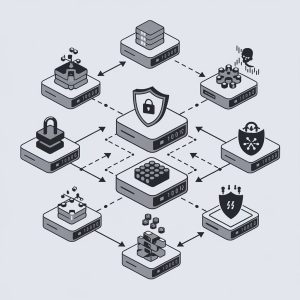Items of № 11, 2024
About the inter-university quantum network
V.E. Velikhov, National Research Center «Kurchatov Institute», assistant to the president, Ph.D.; photiadi_ey@nrcki.ru
M.V. Kovalchuk, National Research Center «Kurchatov Institute», president, corresponding member of the RAS; nrcki@nrcki.ru
S.P. Kulik, Moscow State University (MSU), Quantum Technology Center, scientific supervisor, Dr.Sci. (Phys.-Math.); contact@quantum.msu.ru
Y.B. Mironov, National Research Center «Kurchatov Institute», lead engineer, Ph.D.; ymironov@jscc.ru
A.P. Ovsyannikov, National Research Center «Kurchatov Institute», senior researcher, Joint Supercomputer Center of the Russian Academy of Sciences, leading researcher; ovsyannikov@jscc.ru
A.V. Odinikov, MSU, head of technology transfer center; ip@cnir.msu.ru
B.М. Shabanov, National Research Center «Kurchatov Institute», deputy director, Joint Supercomputer Center of the Russian Academy of Sciences, director, corresponding member of the RAS; jscc@jscc.ru
Abstract. The paper discusses the issues of creating an inter-university quantum network (IUCN), which should provide universities and scientific organizations with new opportunities for teaching students and research in the field of quantum communications and quantum technologies. The article presents an analysis of current projects to create networks with quantum key distribution (QKD), which are being carried out by countries developing quantum technologies. Russia’s achievements in the field of the development of QKD equipment and construction of a backbone quantum network are examined in detail. The article describes IUQN as a set of domains, where a domain is a group of QKD segments based on a common QKD protocol and operating under a single control. The article also describes the first stage of the IUQN implementation in 2024.
Keywords: quantum key distribution, QKD, quantum communications, information security, interuniversity quantum network, IUQN, national research and educational network.
Basic approaches to organizing spectrum sensing in the heterogeneous Internet of Things network based on cognitive radio
K.A. Snopok, Moscow Aviation Institute, department 408 «Infocommunications», researcher; ksnopok@mail.ru
Abstract. The design principles and the architectural features of known LPWAN networks are considered. The analysis of existing network topologies of spectrum sensing subsystem is performed. The main approaches to organizing spectrum sensing in the heterogeneous Internet of Things network based on the cognitive radio (CR-LPWAN) are defined. The scenario of CR-LPWAN network operation in a deterministic cellular frequency band is considered. The operational principles and the algorithm of dynamic access to white spaces of CR-LPWAN network are developed, ensuring guaranteed reliability and quality of communication.
Keywords: heterogeneous networks, Internet of Things, LPWAN, LoRaWAN, cognitive radio, white spaces, dynamic spectrum access.
Normative forecasting of innovative development of telecommunication technologies and services
F.M. Aleksandrovsky, JSC IT Decision, chief executive officer; filipp@it-decision.ru
Yu.V. Deart, CrossBeam System, head of the representative office, Ph.D.(Econ.); jdeart@yandex.ru
Abstract. The article shows the features of the telecommunications industry as a tertiary infrastructure sector of the economy. It is noted that the fundamental basis of both national strategies for the development of information infrastructure and programs for the development of telecommunications networks of operator companies are longterm forecasts of optimal rates of implementation of innovative technologies, products, and services. A critical analysis of traditional methods of long-term forecasting based on the Jipp diagram is performed. Verbal, physical, and mathematical models of innovation diffusion are presented. An algorithm for constructing a long-term forecast of optimal rates of innovation implementation is shown.
Keywords: telecommunications, innovative technologies, diffusion of innovations, pace of implementation, long-term forecast.
Correlation analysis of latent video stream latency in first-person control of UAVs
А.A. Berezkin, The Bonch-Bruevich Saint-Petersburg State University of Telecommunications (SPbSUT), associate professor, Ph.D.; berezkin.aa@sut.ru
N.A. Oblakov, SPbSUT, advanced projects and developments center, technician; oblakov.na@sut.ru
A.A. Chenskiy, SPbSUT, master’s student; chenskii.aa@sut.ru
R.V. Kirichek, SPbSUT, rector, professor, Dr.Sci.(Tech.); kirichek@sut.ru
Abstract. This article is devoted to the study of the variability of tensors of latent feature spaces. The paper analyzes the dynamics of the latent space tensors of video stream frames obtained using the VAE-VQ-f16 model from the Stable Diffusion models. The study includes frame clustering, analysis of the variability of successive frames using the cosine distance, study of correlation dependencies in the latent space, and analysis of the autocorrelation of the video stream. The obtained results demonstrate the potential possibility of implementing models for predicting tensors of latent spaces of subsequent frames of a video stream in UAVs FPV control.
Keywords: latent space, variational autoencoder, neural networks, FPV control, unmanned aerial vehicle, unmanned aircraft system.
Interference mitigation techniques from IMT base stations to space stations with expected EIRP masks
A.S. Pastukh, The M.I. Krivosheev Radio Research & Development Institute (NIIR), head of laboratory; apastukh@lenta.ru
Abstract. The article examines a method to reduce interference from IMT base stations (BS) on satellite service receivers based on the application of the expected equivalent isotropic radiated power (EIRP) mask in the upper hemisphere. To demonstrate the effectiveness of this method, an assessment of the application of expected EIRP masks in the 6425–7125 MHz band was conducted, considering its shared use space stations operating within Fixed Satellite Service (FSS).
Keywords: EIRP mask, 5G, IMT, ITU-R, 6 GHz.
Interference detection for GNSS recievers. Part II
K.Yu. Kolomensky, branch FSBI NIIR–LONIIR, deputy director for science, Ph.D.; kkolomensky@loniir.ru
Abstract. Methods for detecting unintended and intentional interference to global navigation satellite systems (GNSS) are considered. The second part discusses methods of detecting intentional simulated GNSS interference – spoofing. The techniques of spoofing attacks are described, a classification of spoofing detection methods is proposed, and detection methods are analyzed in order of increasing complexity of their implementation from simple methods using typical GNSS receiving modules to anti-spoofing complexes based on the spatial analysis with antenna arrays.
Keywords: global navigation satellite systems (GNSS), GPS, GLONASS, spoofing, spoofing detection methods, Signal Quality Monitoring (SQM), Receiver Autonomous Integrity Monitoring (RAIM), method of double differences, superresolution array processing algorithms, Capon’s method, thermal noise method, MUSIC, ESPRIT.
Modeling of communication network signals with Walsh codes in the form of stochastic differential equations
E.I. Glushankov, The Bonch-Bruevich Saint Petersburg State University of Telecommunications (SPbSUT), professor, Dr.Sci.(Tech.); glushankov57@gmail.com
V.Y. Kontorovich, Research and Advanced Studies Center, National Politechnique Institute (CINVESTAV-IPN), professor, member of the Mexican Academy of Sciences and a Emeritus Member of the Mexican National Researchers System, Dr.Sci.(Tech.); valeri@cinvestav.mx
S.G. Egorov, SPbSUT, researcher, senior lecturer; sgegorov@gmail.com
Abstract. Stochastic differential equations for modeling signals in communication networks using Walsh codes are synthesized. A mathematical model of signals, obtained using Fokker-Planck-Kolmogorov equations and Markov process methods, is proposed to describe nonlinear transformations in group paths. Walsh code signals that provide efficient data transmission are investigated. An approximation of the obtained distribution density of a random process based on Gramm-Charlier series is presented. Different approximation methods are compared in order to evaluate the efficiency and accuracy of signal modeling. The presented results offer a convenient model for statistical simulation of signal processing processes in order to optimize communication systems.
Keywords: Fokker-Planck-Kolmogorov equations, Markov processes, stochastic differential equations, nonlinear transformations, Walsh codes.
An elementary approach to the calculation of queueing systems
A.V. Bogdanov, Nateks Group of Companies, engineer, Ph.D.; alexbogy1972@yandex.ru
Abstract. The paper presents an approach to the computation of queueing system systems based on the method described in A.Y. Khinchin’s article “On Erlang formulas in queueing theory”. This approach is developed for the calculation of message flows with Erlang time distributions of the second and higher order, which are characterized by the presence of aftereffects (a Poisson flow is described by an Erlang first-order distribution), as well as with Rayleigh distributions. Stationary ordinal incoming message flows are used in the calculations. Numerical results are obtained for one- and two-channel queueing systems with losses, and the estimation of the calculation error using simulation modelling is carried out. It is shown that taking into account the errors of the random number generator, the stated methodology for systems with losses is accurate. For a queueing system with waiting and losses with one service channel and one waiting place, an approximate calculation methodology is outlined, which, nevertheless, allows to obtain an error within acceptable limits (not higher than 10%). The results can be used for teaching students in order to more clearly calculate queueing systems and, after additional simplification of the methodology, for preliminary assessment of the quality of various variants of queueing systems.
Keywords: Khinchin, queueing system, distribution.
Detection of low-reflective aerial targets using a long-wave synthetic aperture radar mounted on a UAV
A.V. Borisenkov,Povolzhskiy State University of Telecommunications and Informatics(PSUTI), associate professor, Ph.D.; a.borisenkov@psuti.ru
O.V. Goryachkin, PSUTI, vice-rector for scientific work, professor, Dr.Sci.(Tech.); o.goryachkin@psuti.ru
V.A. Ruzhnikov, PSUTI, rector, associate professor, Ph.D.; rv@psuti.ru
Abstract. The paper investigates the possibility of detecting low-reflective, aerial targets by a synthetic aperture radar using path-interferometry mode. Known methods for implementing radar surveillance of low-reflecting aerial targets use large-sized antenna structures and high-power radio transmission systems and at the same time have a limited range. The solution of the problem is provided by deriving a mathematical model of a series of radar images in the moving target selection channel, assessing the signal-to-noise ratio and calculating the probability of correct detection of a moving target with a fixed value of the false alarm probability. It is shown that aerial targets such as drones can be detected by a long-wave radar station in the moving target selection mode at distances of practical importance, and the accuracy of predicting their location at the current moment in time can be several meters.
Keywords: weakly reflecting aerial target, synthetic aperture radar, moving target selection channel, probability of correct detection.

